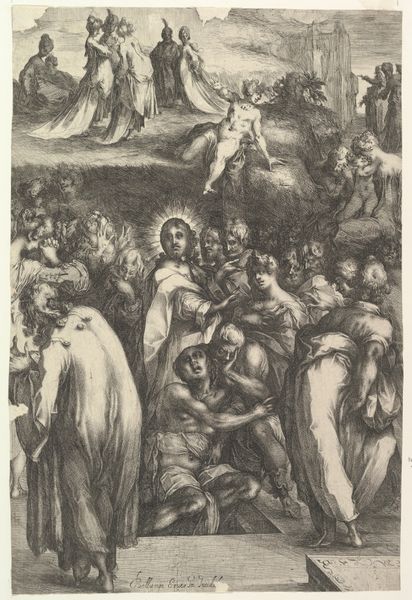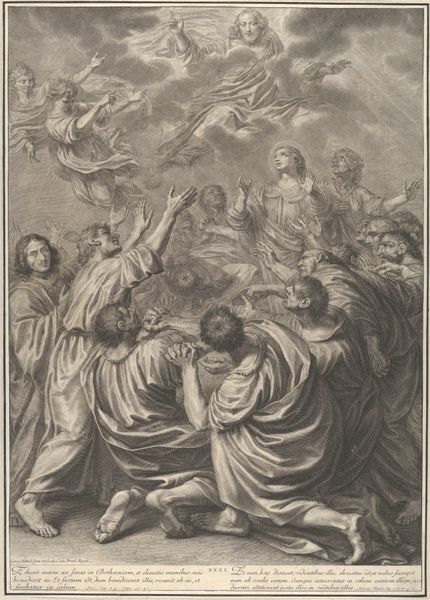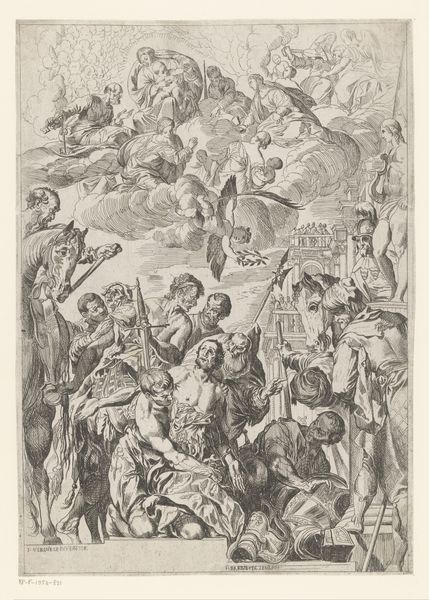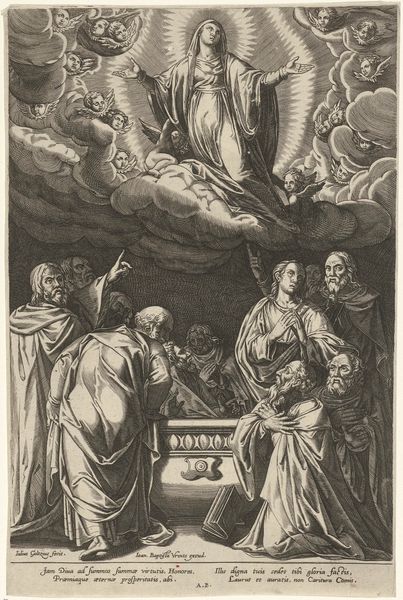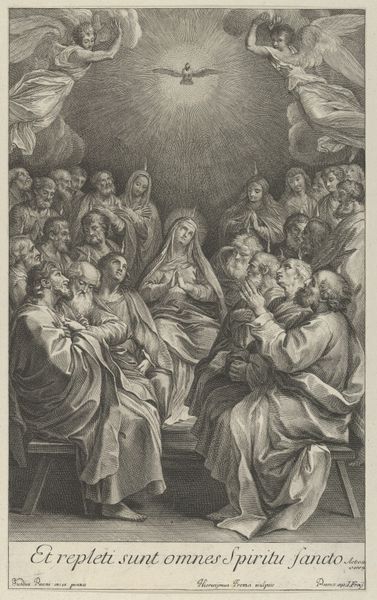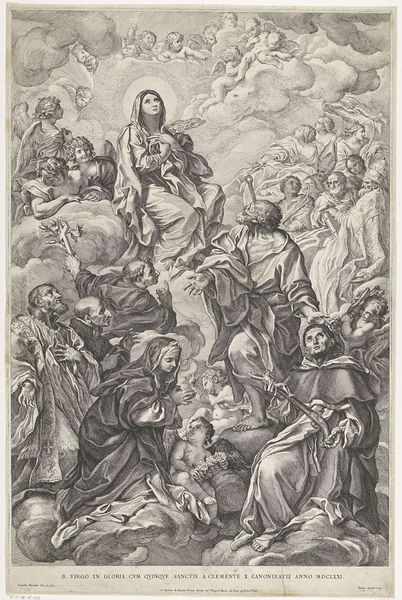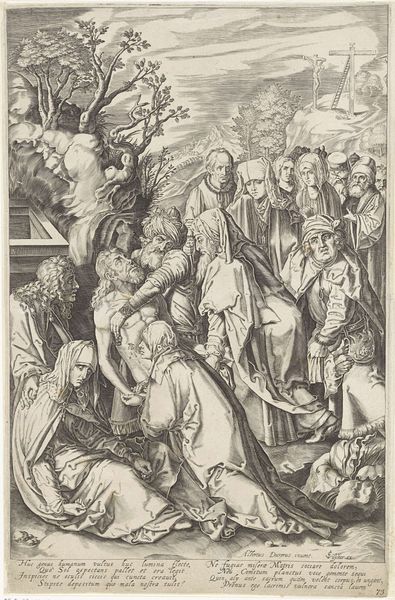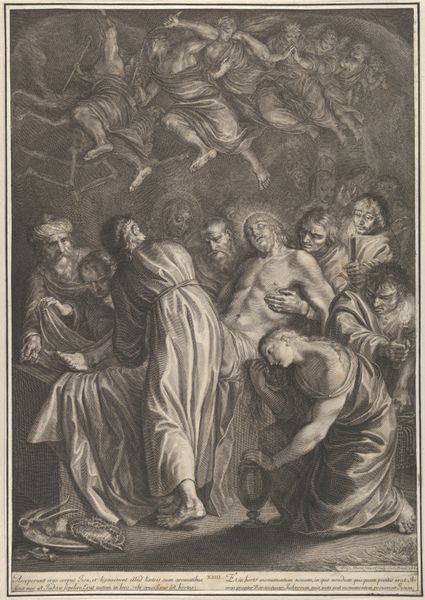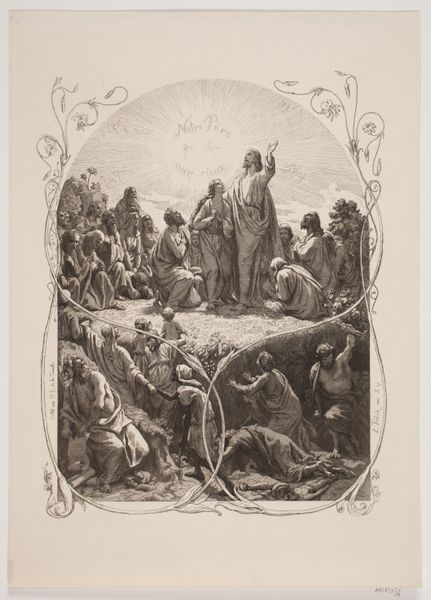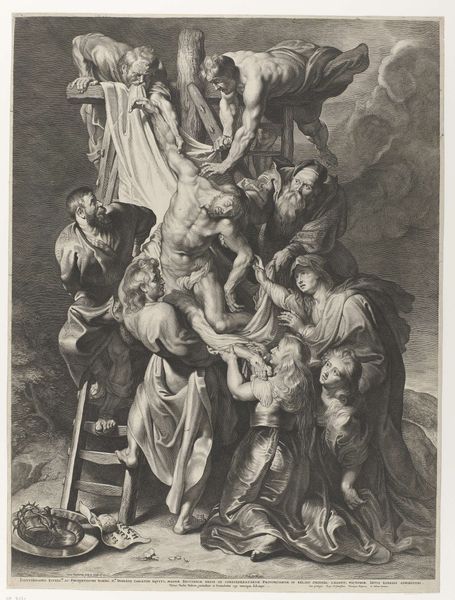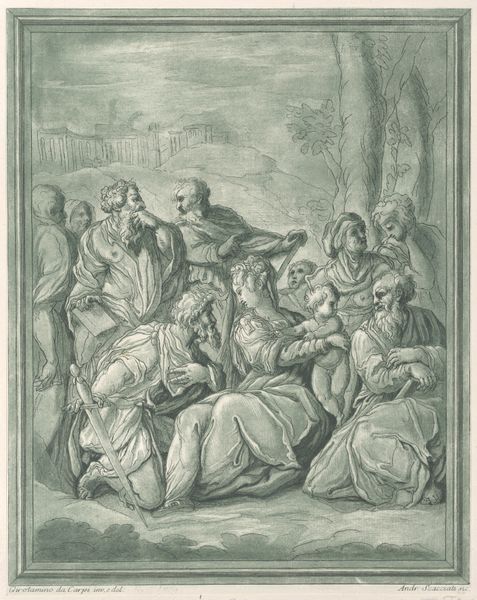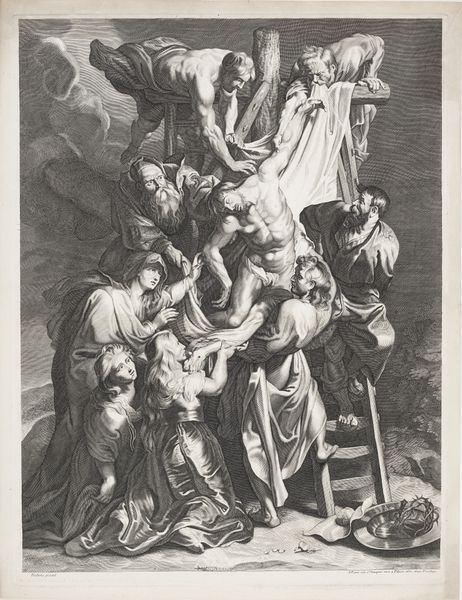
drawing, print
#
drawing
#
allegory
# print
#
figuration
#
history-painting
#
academic-art
Dimensions: Plate: 29 1/8 × 19 7/8 in. (74 × 50.5 cm) Sheet: 37 in. × 25 1/8 in. (94 × 63.8 cm)
Copyright: Public Domain
Curator: James Barry’s “Divine Justice,” created in 1808, currently resides at the Metropolitan Museum of Art. It’s a print, steeped in allegorical themes and showcases Barry’s engagement with history-painting through the academic style. What are your first thoughts when viewing this work? Editor: Well, I am immediately struck by the crowd – it's an anxious congregation under the coolly detached gaze of Justice. There’s a sort of somber mood that pervades the piece; you know, that feeling that justice is not some happy-clappy affair. Curator: Precisely. Barry employed a meticulous drawing technique that served as the groundwork for the prints, placing a sharp focus on form and figuration. The sheer density of figures speaks volumes about Barry's deep study and utilization of the historical art references for prints in circulation. Editor: It does evoke an old master's gravity but infused with an almost feverish energy. Justice floating above, disconnected from the chaos. She’s a distant promise amid the struggles, the earthly struggles, all rendered in black and white! It’s quite potent really. What statements was Barry looking to deliver using justice in the picture's name? Curator: Barry’s overarching concept involved ideas relating to justice as the bedrock of civil order, law, and governance, especially in times of conflict or societal upheaval, connecting tangible earthly struggles to ideals represented by Divine Justice and exploring what a well-balanced moral fabric within society entails. Barry, through his handling of medium and motif, engaged with the period's concerns of nationhood. Editor: In a period so consumed with social revolution and philosophical introspection, you almost see justice as this remote, unattainable figure, an idea that hovers just beyond our grasp, even taunting at times. The composition almost mimics the emotional distance from this "Divine Justice". A social critique through monochrome precision! Fascinating. Curator: And precisely what Barry aims for. The artist intricately layered social commentary into the piece through the selection of materials and modes of making as well. It allows Barry to both speak of societal order and to create new prints for dissemination as commodities within the burgeoning art markets of London. It is, if you will, Divine Justice itself in material form. Editor: Seeing "Divine Justice" today is like peering into a society frozen in contemplation, asking if its principles match reality, the scales forever tipping. Thanks to our dialogue, my sense of the piece goes beyond initial impressions. Curator: Agreed. By focusing on process and production, we can better appreciate the convergence of aesthetics, history, and social commentary in Barry's work.
Comments
No comments
Be the first to comment and join the conversation on the ultimate creative platform.
